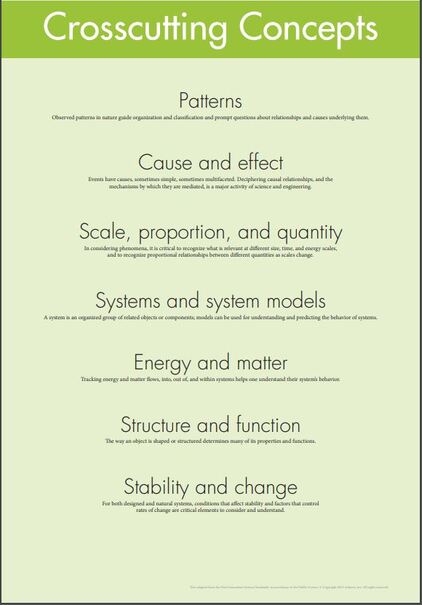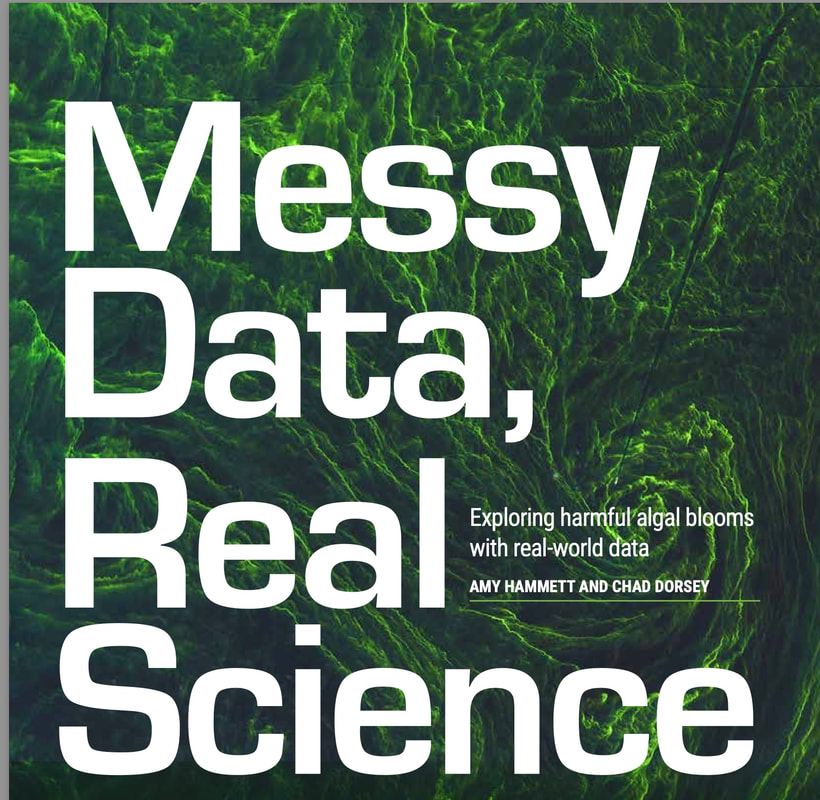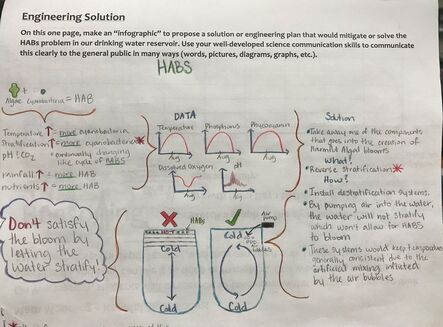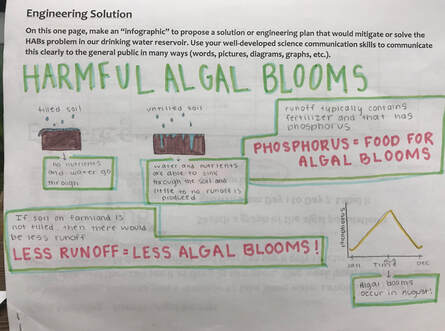PBL: Harmful Algal Blooms
| |||||||||
|
Phenomenon
In this sequence, students will be co-creating storylines about the water supply of their own region. As each water supply has a unique composition, the result of each investigation will also be unique. The complete story map is not yet drawn; instead, students can co-create one for their own community through data visualization and data storytelling. The following is a storyline "prompt" to get started on this real science investigation in your area: According to USGS, “Freshwater and marine algal blooms can be called harmful because they lower dissolved oxygen concentrations, alter aquatic food webs, leave ugly scums along shorelines, produce taste-and-odor compounds that cause drinking water and fish flesh to taste bad, or produce toxins so potent they poison organisms in the water and on the land.” CyanoHABs, a suite of potent neurotoxins and hepatotoxins [liver toxins], have been implicated in human and animal illness and death in at least 43 states in the United States, and microcystins, the most common and most potent group of cyanotoxins, occur in all 50 of the United States (1, 2, 3, 4). A report of the American Water Works Association (AWWA) Research Foundation found that 80 percent of samples in Canada and US were positive for microcystins, and they were found to persist for up to two months following the decline of algal populations” (5). Entering populations by way of drinking water and by way of the food supply from irrigated cropland, toxins from harmful algal blooms have been shown to successfully migrate through both the blood-brain and the blood-testis barriers, implicating them in both structural and functional physiological changes in animal models and in the promotion of proto-oncogenes, the genes responsible for all known cancers (6, 7). "USGS National Water-Quality Program scientists are leading a diverse range of studies to address cyanoHAB issues in water bodies throughout the United States, using a combination of traditional methods and emerging technologies in collaboration with numerous partners. However, despite advances in scientific understanding of cyanobacteria and associated compounds, many questions remain unanswered about:
The answers to these questions are hidden in the water quality data of USGS, and your students have a real-world, interdisciplinary, cross-disciplinary Science investigation to conduct that will benefit your families, community, and community partners for years to come! Engaging in Argument from Evidence
|
Credit: Utah State Parks and Recreation
Develop & Use ModelsEntry-Level Data-Users:
Using Common Online Data Analysis Platform (CODAP), a free educational software for data analysis, located at https://codap.concord.org/, you can manipulate and visualize trends in data from United States Geological Survey (https://waterdata.usgs.gov/nwis), a new site released February 12, 2019. Intermediate-Level Data-Users:
Students can quantify the levels of fluorescence from chlorophyll-a, phycocyanin, and/or phcoerythrin in water samples using a range of methods and equipment: Vernier's Go Direct® SpectroVis® Plus Spectrophotometer, which can also be used as a fluorometer or fluorimeter Fluorometers and Sondes for Cyanobacteria - Ohio EPA Advanced Data-Users:
Ready to deep-dive? Test drive these other Project EDDIE resources:
|
3D Assessment
- The Task Annotation Project in Science is a valuable framework for the development of multimodal, 3D assessments. (Disclaimer: I developed exemplars and an interchangeable performance assessment template for this project.)
- For this Harmful Algal Blooms (HABs) project, in particular, my students developed websites, videos, presented at local, state, and national science and government conferences, etc. (You can see some of that work on Twitter with the hashtag #RehabHABs.)
- I use the Science & Engineering (SEPs) rubric below for evaluation, and these are a couple of "infographics" that students used to demonstrate content prowess prior to presenting in public venues.
- If you are interested in more exemplars, please feel free to email me, and I will shoot some your way!
| seps_rubric.pdf | |
| File Size: | 242 kb |
| File Type: | |
Science & Engineering Practices (SEPs) Rubric
Credit: Conejo Valley Unified School District, California
Credit: Conejo Valley Unified School District, California
Where is the curriculum "map" for how to do this project?
In genuine science practice, there is no road map to the unknowns. Instead, as scientists, we create the map as we explore the terrain.
Without a story map, or prefabricated storyline, how can teachers get students where they need to go?
We instead explore, and the Crosscutting Concepts lead the way to our discovery of the unknown hidden within the data.
In genuine science practice, there is no road map to the unknowns. Instead, as scientists, we create the map as we explore the terrain.
Without a story map, or prefabricated storyline, how can teachers get students where they need to go?
We instead explore, and the Crosscutting Concepts lead the way to our discovery of the unknown hidden within the data.

|


